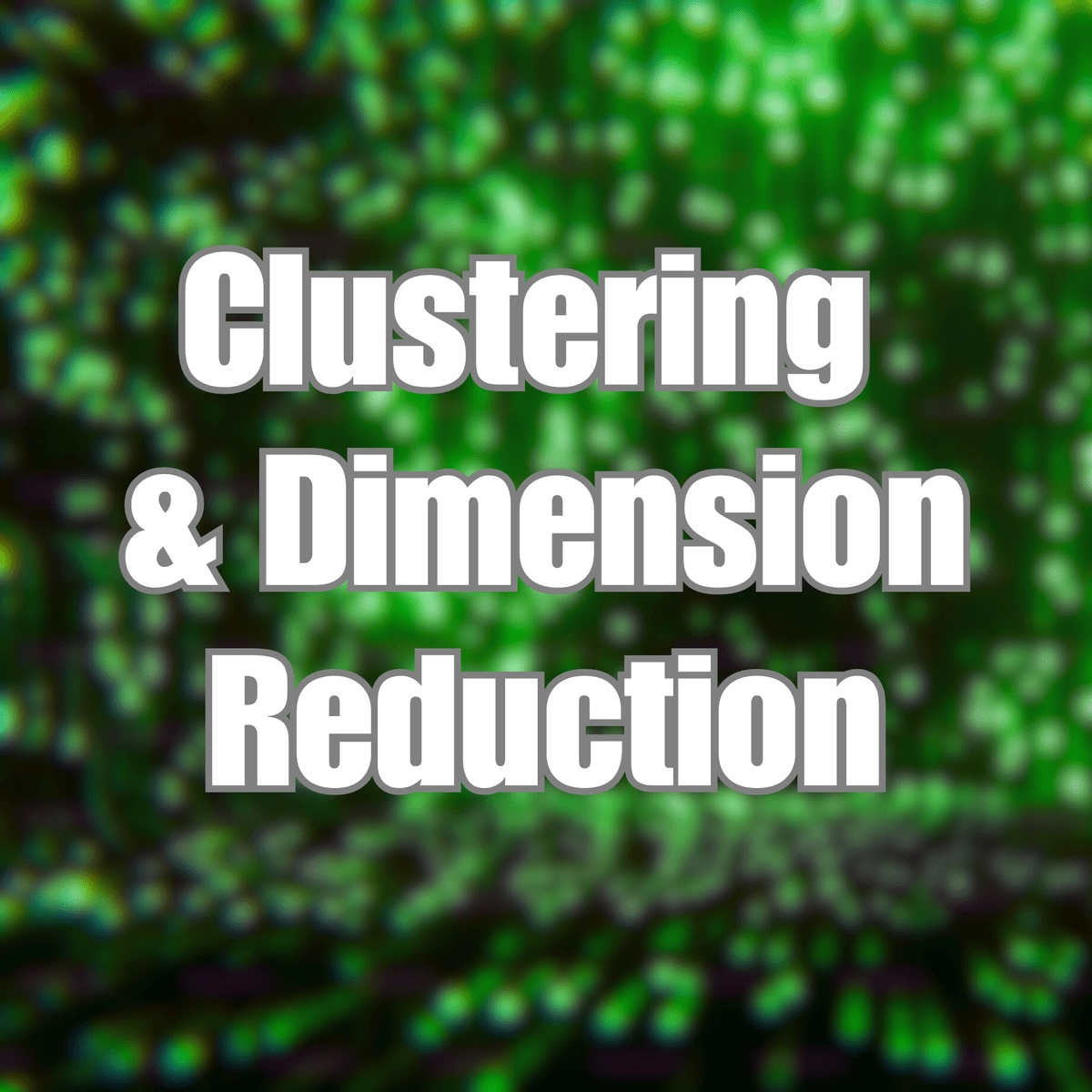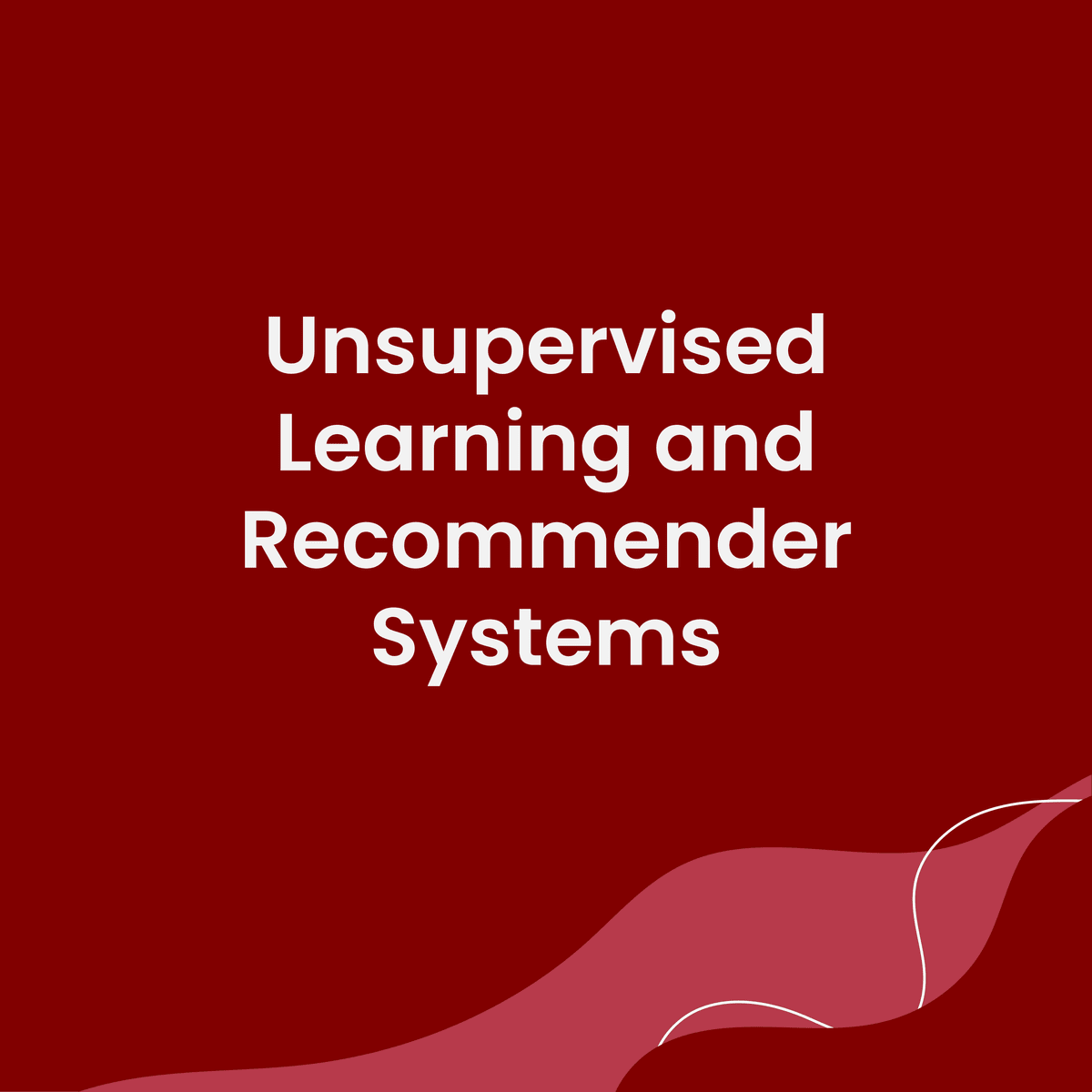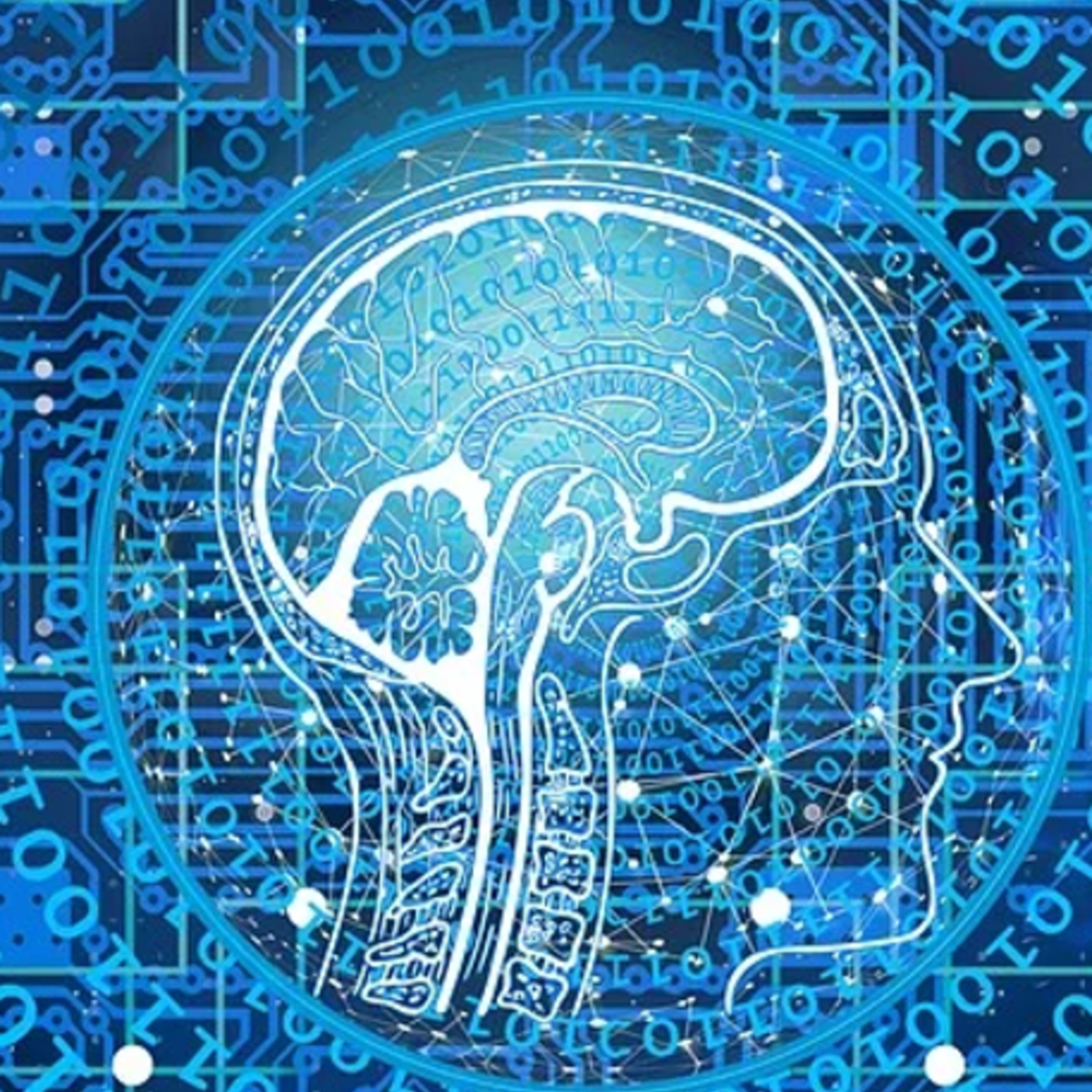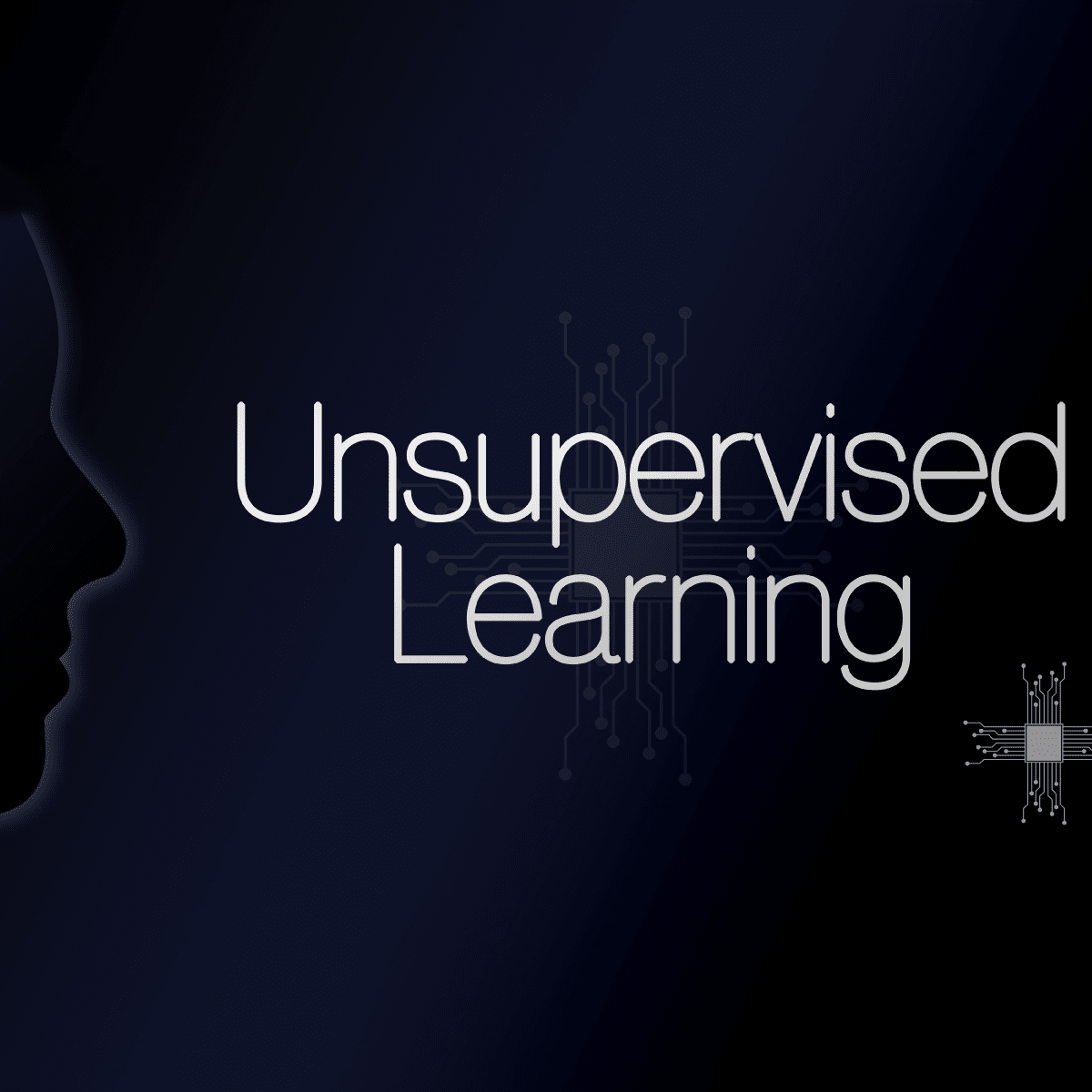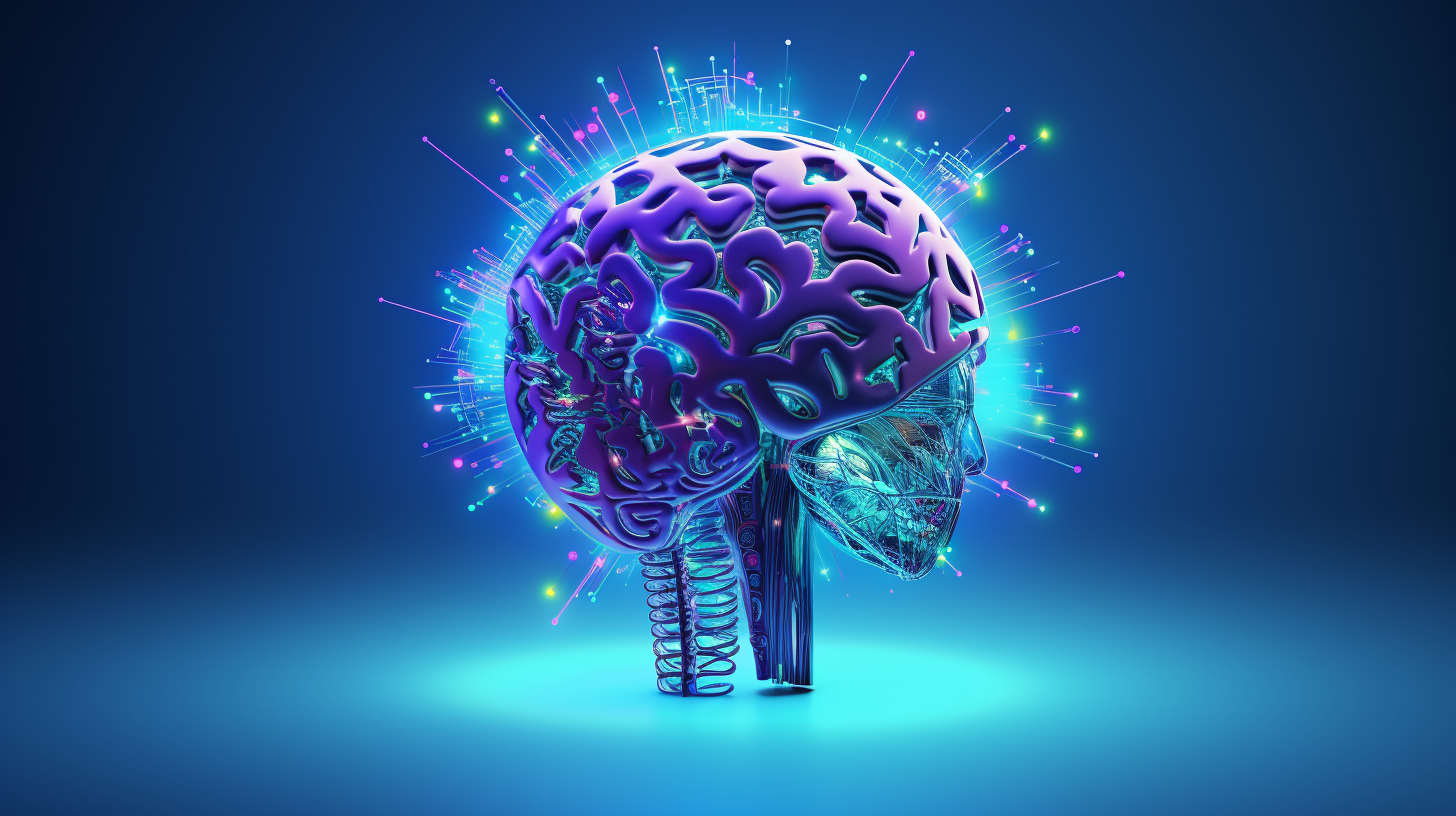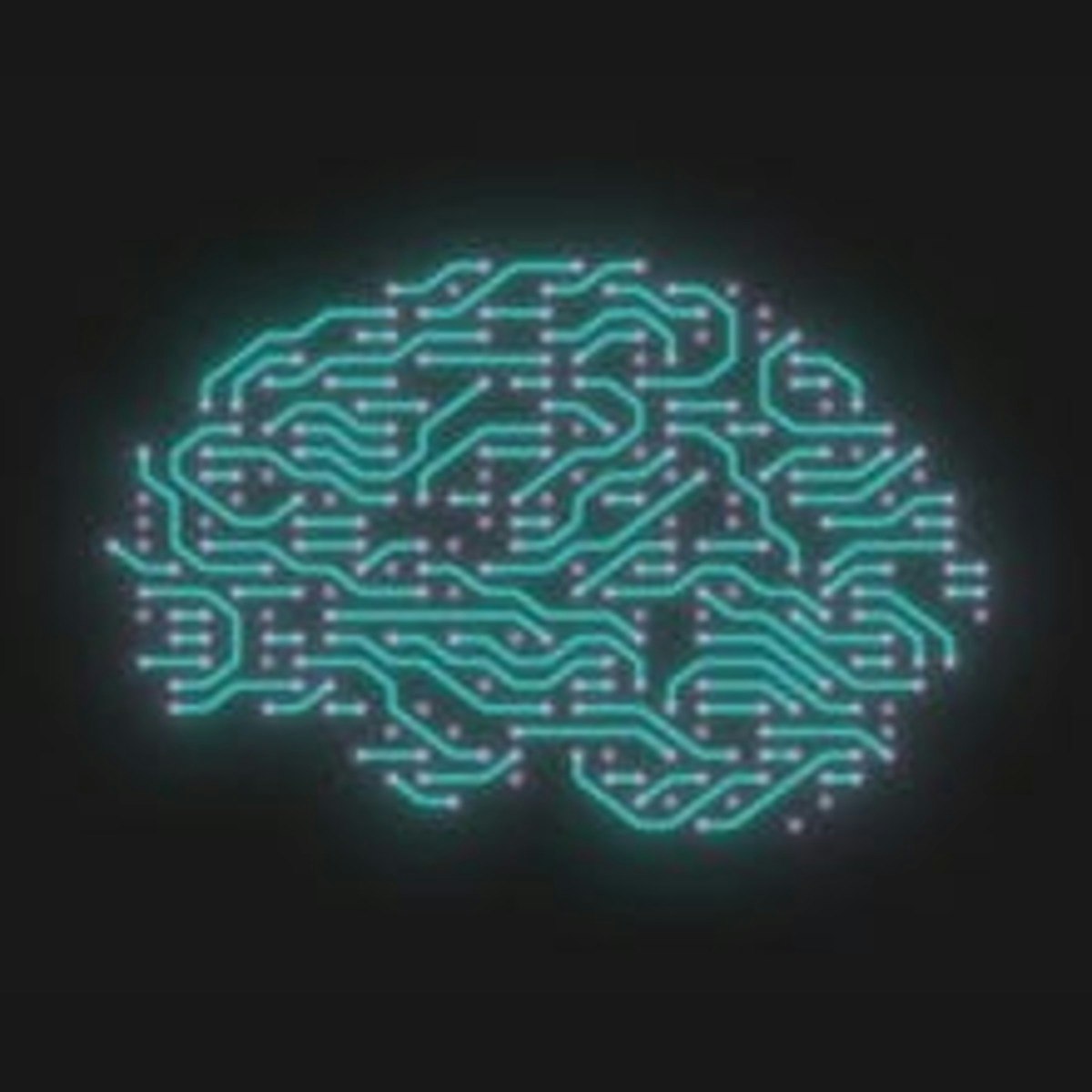Unsupervised Learning
Navigating the Landscape of Unsupervised Learning
Unsupervised learning is a fascinating and powerful branch of machine learning where algorithms learn patterns from unlabeled data. Unlike its supervised counterpart, there are no predefined output labels or "correct answers" provided during the training process. Instead, the primary goal is to explore the data to find inherent structures, groupings, or anomalies within it. This capability makes it an invaluable tool for uncovering hidden insights and understanding complex datasets in their raw form.
Working in the field of unsupervised learning can be incredibly engaging. Imagine developing systems that can automatically group similar news articles from thousands of sources, identify unusual transactions that might signal fraudulent activity, or help researchers discover novel patterns in genetic data. The thrill lies in enabling machines to make sense of complex information without explicit guidance, leading to discoveries and efficiencies that might not be apparent through manual analysis. This exploratory nature of unsupervised learning is what draws many to the field, offering a blend of data investigation, algorithmic thinking, and real-world problem-solving.
For those new to the concepts, unsupervised learning allows a system to teach itself by exploring the data. Think of it like giving someone a mixed bag of fruits and asking them to sort them into groups based on similarity, without telling them what a "ripe apple" or a "banana" looks like. The person would examine characteristics like color, shape, and size to form their own groupings. Unsupervised learning algorithms do something similar with data, but on a much larger and more complex scale.
Introduction to Unsupervised Learning
This section will lay the groundwork for understanding what unsupervised learning entails, how it fundamentally differs from other machine learning paradigms, and how its principles can be understood through everyday examples.
Definition and Basic Principles
Unsupervised learning, at its core, is a type of machine learning where algorithms are tasked with finding patterns or intrinsic structures in a dataset that has not been labeled, classified, or categorized. The system tries to learn the relationships between data points by observing the data's characteristics on its own. It's about discovery rather than prediction based on pre-existing labels. The basic principle is to allow the model to naturally find groupings, reduce complexity, or identify outliers based on the inherent properties of the data.
These algorithms work by examining the data for similarities, differences, densities, or other underlying distributional properties. For example, an algorithm might group data points that are "close" to each other in a defined feature space or identify data points that are far away from any dense group of points. This process doesn't rely on a human to provide correct answers or to pre-label the data, making it powerful for exploring new datasets where prior knowledge is limited.
The applications of these principles are vast, ranging from segmenting customers based on purchasing habits to detecting abnormal network traffic that could indicate a security breach. The beauty of unsupervised learning lies in its ability to autonomously organize and interpret large volumes of information, often revealing insights that humans might miss.
Key Differences from Supervised Learning
The most significant distinction between unsupervised and supervised learning lies in the nature of the data they use and their primary objectives. Supervised learning algorithms are trained on labeled datasets, meaning each input data point is paired with a corresponding correct output or target variable. The goal of supervised learning is to learn a mapping function that can predict the output for new, unseen input data. Think of it as learning with a teacher who provides the answers.
Unsupervised learning, conversely, operates on unlabeled data. There is no teacher providing correct answers or explicit target outputs. The algorithm explores the data on its own to identify patterns, structures, or relationships. Instead of predicting a known outcome, unsupervised learning focuses on tasks like clustering data into groups, reducing the number of variables (dimensionality reduction), or finding unusual data points (anomaly detection).
Another key difference is the typical use case. Supervised learning is often employed for predictive tasks like classifying emails as spam or not spam, or forecasting sales figures. Unsupervised learning excels in exploratory data analysis, helping to understand the underlying structure of data, segment customers for targeted marketing, or identify previously unknown correlations. While supervised learning aims for accuracy in prediction based on known labels, unsupervised learning aims for discovery and representation of the data's inherent characteristics.
If you are interested in learning more about the broader field that encompasses both of these approaches, you might explore courses and resources related to Machine Learning in general.
And for a deeper dive into the alternative paradigm, understanding Supervised Learning can provide valuable context.
Real-World Analogies for Intuitive Understanding
To grasp the essence of unsupervised learning, consider a few real-world scenarios. Imagine you're a librarian faced with a massive, unorganized pile of newly donated books. Without any pre-existing categories or instructions (labels), you might start grouping them by common themes you observe: perhaps one pile for science fiction, another for historical novels, and a third for poetry. This act of creating groups based on inherent similarities is akin to clustering in unsupervised learning.
Another analogy is identifying an unusual sound your car is making. You don't have a label for it, but you recognize it's different from the normal hums and whirs. This is similar to anomaly detection, where an unsupervised algorithm sifts through data to find data points that deviate significantly from the norm, like flagging a potentially fraudulent credit card transaction.
Think also about how social media platforms might suggest new connections. They analyze your existing network, the networks of your connections, and shared interests (all without explicit labels of who you "should" connect with) to find potential new friends or professional contacts. This process involves finding underlying patterns and associations, another key aspect of unsupervised learning. These everyday examples highlight how unsupervised learning algorithms work to find structure and meaning in data without being explicitly told what to look for.
Core Techniques in Unsupervised Learning
Unsupervised learning encompasses a variety of algorithms and methods designed to tackle different types of problems. Understanding these core techniques is crucial for anyone looking to apply or research in this field. These methods generally fall into categories like clustering, dimensionality reduction, association rule learning, and generative modeling.
Clustering Methods
Clustering is a fundamental technique in unsupervised learning that involves grouping a set of data objects into subsets, called clusters. The goal is to make it so that objects in the same cluster are more similar to each other than to those in other clusters, based on certain defined features. This similarity is often measured using distance metrics like Euclidean distance.
One of the most well-known clustering algorithms is k-means clustering. It aims to partition n observations into k clusters in which each observation belongs to the cluster with the nearest mean (cluster centroid). The algorithm iteratively assigns data points to clusters and recalculates the centroids until convergence. It's relatively simple to implement and computationally efficient for large datasets, but it requires the number of clusters (k) to be specified beforehand and can be sensitive to the initial placement of centroids.
Hierarchical clustering is another popular method that creates a tree-like structure of clusters, known as a dendrogram. There are two main approaches: agglomerative (bottom-up), where each data point starts as its own cluster and pairs of clusters are merged as one moves up the hierarchy, and divisive (top-down), where all data points start in one cluster which is then split recursively. Hierarchical clustering doesn't require the number of clusters to be pre-specified and can reveal different levels of granularity in the data structure. However, it can be computationally more intensive than k-means for large datasets.
Other clustering methods include DBSCAN (Density-Based Spatial Clustering of Applications with Noise), which groups together points that are closely packed together, marking as outliers points that lie alone in low-density regions. Probabilistic clustering methods, like Gaussian Mixture Models (GMMs), assign data points to clusters based on the probability of belonging to a particular distribution. Each technique has its strengths and is suited to different types of data distributions and problem requirements. Understanding these methods is key to leveraging the power of Data Science and finding meaningful patterns.
These courses provide a solid introduction to various clustering algorithms and their applications.
Dimensionality Reduction
Many real-world datasets contain a large number of variables or features. Dimensionality reduction techniques aim to reduce the number of these features while preserving as much of the important information or structure in the data as possible. This is important for several reasons: it can simplify models, reduce computational cost, mitigate the "curse of dimensionality" (where high-dimensional spaces make data sparse and analysis difficult), and facilitate data visualization.
Principal Component Analysis (PCA) is one of the most widely used dimensionality reduction techniques. PCA transforms the data into a new set of variables, called principal components, which are uncorrelated and ordered such that the first few components retain most of the variance present in the original dataset. By selecting only the top principal components, one can reduce the dimensionality while losing minimal information. PCA is particularly effective for identifying linear relationships in the data.
Another technique, t-distributed Stochastic Neighbor Embedding (t-SNE), is a non-linear dimensionality reduction technique primarily used for visualizing high-dimensional datasets in low-dimensional space (typically 2D or 3D). It models each high-dimensional object by a two- or three-dimensional point in such a way that similar objects are modeled by nearby points and dissimilar objects are modeled by distant points with high probability. t-SNE is particularly good at revealing local structure and clusters in the data, making it a popular choice for visualizing complex datasets in fields like genomics and image processing.
These methods, and others like Linear Discriminant Analysis (LDA) (though often used in a supervised context for classification, its variants can be unsupervised) or Autoencoders (a type of neural network used for learning efficient data codings), are vital tools in the machine learning toolkit for handling high-dimensional data effectively. For those interested in the mathematical underpinnings, exploring Mathematics courses can be beneficial.
The following courses touch upon these important techniques within the broader context of machine learning.
Association Rule Learning
Association rule learning, sometimes referred to as association rule mining, is a rule-based machine learning method for discovering interesting relationships, or "association rules," between variables in large datasets. An association rule is an if-then statement, such as "If a customer buys bread and butter, then they are likely to buy milk." The "if" part is called the antecedent, and the "then" part is the consequent.
This technique is widely used in market basket analysis, which analyzes customer transaction data to identify products that are frequently purchased together. For example, a supermarket might discover that customers who buy diapers also tend to buy baby wipes. This insight can be used for store layout optimization, cross-selling promotions, and developing recommendation systems.
Common algorithms for association rule learning include Apriori and FP-Growth (Frequent Pattern Growth). The Apriori algorithm uses a "bottom-up" approach, where frequent itemsets (sets of items that appear together frequently) are extended one item at a time. FP-Growth builds a compact data structure called an FP-tree and then mines frequent itemsets directly from this structure. The strength of these rules is typically measured by metrics like support (how often the items appear together in the dataset), confidence (how often the consequent is true when the antecedent is true), and lift (how much more likely the consequent is to be purchased when the antecedent is purchased, compared to its general likelihood).
These courses offer insights into how association rules are derived and applied.
Generative Models
Generative models are a class of statistical models that are used to generate new data instances that resemble the training data. Unlike discriminative models (common in supervised learning) which learn the boundary between classes, generative models learn the underlying probability distribution of the data. This allows them to create new samples from that learned distribution. Unsupervised generative models are particularly powerful because they can learn these distributions from unlabeled data.
Generative Adversarial Networks (GANs) are a prominent example of generative models. A GAN consists of two neural networks, a generator and a discriminator, that are trained simultaneously through a competitive process. The generator tries to create realistic data samples (e.g., images of faces, pieces of music), while the discriminator tries to distinguish between the real data and the fake data generated by the generator. Over time, the generator becomes better at creating convincing fakes, and the discriminator becomes better at spotting them, leading to highly realistic generated samples. GANs have shown remarkable success in image generation, video synthesis, and drug discovery.
Variational Autoencoders (VAEs) are another type of generative model built upon the autoencoder architecture. An autoencoder consists of an encoder that maps input data to a lower-dimensional latent space, and a decoder that reconstructs the original data from this latent representation. VAEs add a probabilistic spin: the encoder produces parameters for a probability distribution in the latent space (typically a Gaussian distribution). New data can then be generated by sampling from this learned latent distribution and passing it through the decoder. VAEs are known for producing smoother latent spaces and are often used for tasks like image generation and anomaly detection.
These models represent the cutting edge of unsupervised learning and are central to many recent advancements in Artificial Intelligence.
For those interested in the theoretical and practical aspects of these advanced models, the following books are highly recommended.
Industry Applications of Unsupervised Learning
Unsupervised learning techniques are not just theoretical constructs; they are actively deployed across a multitude of industries to solve complex problems and drive business value. Their ability to find patterns in unlabeled data makes them particularly useful in scenarios where labeled data is scarce, expensive to obtain, or where the goal is exploration and discovery rather than prediction of predefined categories. Businesses leverage these methods for customer understanding, risk management, operational efficiency, and innovation.
Customer Segmentation in Marketing
One of the most common and impactful applications of unsupervised learning is customer segmentation. Marketing teams use clustering algorithms to group customers based on shared characteristics, such as purchasing behavior, demographics, website interactions, or engagement with marketing campaigns. For example, an e-commerce company might use k-means clustering to identify distinct groups like "high-spending loyalists," "budget-conscious occasional shoppers," and "newly acquired users."
By understanding these segments, businesses can tailor their marketing messages, product recommendations, and service offerings more effectively. Instead of a one-size-fits-all approach, companies can develop targeted strategies for each segment, leading to higher conversion rates, increased customer satisfaction, and improved return on investment (ROI) for marketing spend. This allows for more personalized experiences, which are increasingly expected by consumers. The insights gained can also inform product development by highlighting the unmet needs of specific customer groups.
Unsupervised learning helps uncover these natural groupings without preconceived notions about what the segments should be, often revealing non-obvious patterns that manual analysis might miss. For those working in or aspiring to roles in marketing analytics, a strong grasp of these techniques is becoming increasingly valuable. You can explore related topics on OpenCourser by browsing the Marketing category.
This course specifically addresses the application of unsupervised learning in a marketing context.
Anomaly Detection in Cybersecurity
In the realm of cybersecurity, anomaly detection is a critical application of unsupervised learning. Given the constantly evolving nature of cyber threats, it's often impossible to have pre-labeled examples of all possible attacks. Unsupervised algorithms excel at identifying unusual patterns or outliers in data that deviate from normal behavior. This can be applied to network traffic, system logs, or user activity to flag potentially malicious activities.
For instance, an unsupervised model can learn the typical patterns of network communication within an organization. If a sudden surge in data transfer to an unknown external server occurs, or if a user account starts accessing resources it normally doesn't, the system can raise an alert. This is crucial for detecting zero-day exploits, insider threats, or compromised accounts before significant damage occurs. Anomaly detection can also identify faulty equipment or software bugs that manifest as unusual system behavior.
The ability of unsupervised learning to sift through vast amounts of data and pinpoint subtle deviations makes it an indispensable tool for modern security operations centers (SOCs). It complements signature-based detection methods by finding novel and unforeseen threats. Professionals in Cybersecurity increasingly benefit from understanding these techniques.
This course touches upon anomaly detection as part of its curriculum.
Market Basket Analysis in Retail
Market basket analysis, driven by association rule learning, is a widely adopted unsupervised learning technique in the retail industry. It involves analyzing large datasets of customer transactions to discover associations between different items that customers purchase together. The classic example is the "diapers and beer" scenario, where stores supposedly found that men buying diapers on certain days of the week also tended to buy beer. While this specific example's veracity is debated, the principle holds: identifying co-occurrence patterns can lead to actionable insights.
Retailers use these insights for various purposes, including store layout design (placing frequently co-purchased items near each other), product bundling (creating combo offers), targeted promotions, and inventory management. Online retailers leverage market basket analysis to power their recommendation engines, suggesting products "frequently bought together" or "customers who bought this also bought." This not only enhances the customer shopping experience by presenting relevant items but also helps increase average order value and overall sales.
The strength of these associations is measured by metrics like support, confidence, and lift, which help retailers identify the most meaningful and actionable rules. This data-driven approach allows retailers to make more informed decisions about merchandising and marketing strategies. If this area interests you, exploring retail analytics further can provide deeper knowledge.
The following course provides a good foundation for understanding the algorithms used in market basket analysis.
Feature Learning in Autonomous Systems
Unsupervised learning plays a crucial role in feature learning for autonomous systems, such as self-driving cars, drones, and robots. Feature learning, also known as representation learning, involves automatically discovering the relevant features or representations from raw data that are necessary for a downstream task (like object detection or navigation). In many autonomous systems, the environment is complex and dynamic, and manually engineering features can be incredibly challenging and time-consuming.
Unsupervised techniques like autoencoders and deep belief networks can learn meaningful, compact representations of sensory input (e.g., camera images, LiDAR point clouds) without explicit labels. For example, an autoencoder might learn to compress an image of a street scene into a lower-dimensional representation that captures essential elements like lane markings, pedestrians, and other vehicles. These learned features can then be used by other parts of the autonomous system for perception, decision-making, and control.
Generative models like GANs can also be used to generate synthetic training data, helping to improve the robustness of autonomous systems by exposing them to a wider variety of scenarios, including rare or dangerous situations that are difficult to encounter in real-world testing. The ability of unsupervised learning to extract salient information from vast amounts of unlabeled sensory data is key to advancing the capabilities and reliability of autonomous technologies. This is a rapidly evolving area within Robotics and AI.
Consider these resources for understanding the broader context of machine learning and deep learning applications.
Formal Education Pathways
Embarking on a career that involves unsupervised learning often benefits from a strong foundation in formal education. While self-directed learning is increasingly viable, traditional academic routes provide structured knowledge, research opportunities, and recognized credentials that can be advantageous, particularly for specialized roles or research-oriented careers. Understanding the typical educational journey can help aspiring individuals plan their path effectively.
Relevant Undergraduate Coursework
A bachelor's degree in fields like Computer Science, Data Science, Statistics, Mathematics, or a related engineering discipline typically provides the foundational knowledge required for delving into unsupervised learning. Key coursework often includes calculus (especially multivariable), linear algebra, probability and statistics, data structures, and algorithms. These mathematical and computational subjects are the bedrock upon which machine learning concepts are built.
Specific courses in machine learning, artificial intelligence, data mining, and pattern recognition are highly relevant. Many universities now offer introductory machine learning courses that cover both supervised and unsupervised techniques. Look for courses that include practical programming components, often using languages like Python or R, and involve working with real-world datasets. Exposure to database management and data visualization tools can also be beneficial.
Beyond core technical subjects, courses that develop analytical thinking, problem-solving skills, and scientific methodology are valuable. An undergraduate thesis or capstone project focused on a machine learning problem, potentially involving unsupervised techniques, can provide excellent hands-on experience and demonstrate practical skills to potential employers or graduate programs. Consider browsing Computer Science courses on OpenCourser to see typical curricula.
These introductory courses can help build a foundational understanding of machine learning, including unsupervised methods.
Graduate Research Opportunities
For those aspiring to push the boundaries of unsupervised learning or to work in advanced research and development roles, a graduate degree (Master's or Ph.D.) is often essential. Graduate programs offer the opportunity to specialize deeply in machine learning and contribute to novel research in unsupervised learning algorithms, theory, or applications. This level of study typically involves more advanced coursework in statistical learning theory, probabilistic graphical models, deep learning, and specialized unsupervised learning topics.
Research opportunities are a cornerstone of graduate education. Students often work closely with faculty members on cutting-edge research projects, which might involve developing new clustering algorithms, creating more efficient dimensionality reduction techniques, or applying unsupervised methods to solve complex problems in various domains like bioinformatics, astrophysics, or natural language processing. This research often leads to publications in academic conferences and journals, which are crucial for a research-oriented career.
Choosing a graduate program with strong faculty expertise in unsupervised learning and related areas is key. Look for universities and research labs that are active in publishing at top machine learning conferences (such as NeurIPS, ICML, ICLR). Assistantships or fellowships can provide financial support while pursuing graduate studies. The experience gained in conducting independent research, critical thinking, and disseminating findings is invaluable for high-level roles in both academia and industry.
These advanced courses and specializations often form part of graduate-level studies or intensive self-study.
Interdisciplinary PhD Programs
Unsupervised learning is inherently interdisciplinary, finding applications in a vast array of fields beyond computer science. As such, interdisciplinary Ph.D. programs are becoming increasingly common and valuable. These programs might combine machine learning with fields like biology (e.g., computational biology, bioinformatics), neuroscience (e.g., computational neuroscience), physics, finance, public policy, or linguistics.
In such programs, students learn to apply unsupervised learning techniques to solve domain-specific problems. For example, a Ph.D. student might use clustering algorithms to identify subtypes of a disease based on patient genomic data, or employ dimensionality reduction to understand complex patterns in brain activity. This requires not only a deep understanding of machine learning methods but also substantial knowledge of the application domain.
The advantage of an interdisciplinary Ph.D. is the ability to bridge the gap between methodological development and real-world impact. Graduates from these programs are well-equipped to lead research that requires expertise in both machine learning and a specific scientific or engineering discipline. They often find roles in specialized industry research labs, academic departments that focus on applied science, or as consultants bringing AI expertise to various sectors. When considering such a program, evaluate the strength of both the machine learning faculty and the faculty in the collaborating department.
The following book is a classic text often used in graduate programs and provides a strong theoretical foundation.
Another foundational book for advanced study is:
Mathematics Prerequisites
A strong mathematical background is essential for a deep understanding and effective application of unsupervised learning techniques. While some high-level tools and libraries can abstract away the underlying mathematics, a solid grasp of these concepts is crucial for developing new methods, troubleshooting existing ones, understanding their limitations, and interpreting results correctly. For advanced roles or research, this mathematical fluency is non-negotiable.
Key mathematical areas include:
- Linear Algebra: Concepts like vectors, matrices, eigenvalues, eigenvectors, and matrix decompositions are fundamental to many unsupervised learning algorithms, especially dimensionality reduction techniques like PCA.
- Probability Theory: Understanding probability distributions, random variables, expectation, variance, conditional probability, and Bayesian inference is crucial for probabilistic models like Gaussian Mixture Models and for understanding the theoretical underpinnings of many algorithms.
- Calculus: Differential calculus, including partial derivatives and gradients, is essential for optimization, which is at the heart of training many machine learning models. Understanding integrals is also important for some probabilistic concepts.
- Statistics: Concepts like descriptive statistics, hypothesis testing, estimation theory, and understanding data distributions are vital for data exploration, model evaluation (even without labels, internal validation metrics exist), and interpreting results.
- Optimization Theory: Many unsupervised learning algorithms involve optimizing an objective function (e.g., minimizing within-cluster variance in k-means). Understanding optimization algorithms like gradient descent is beneficial.
These mathematical foundations not only enable a deeper comprehension of how algorithms work but also provide the tools to innovate and adapt methods to new types of data and problems. Many Mathematics courses available online can help build or reinforce these prerequisite skills.
These books are excellent resources for understanding the mathematical foundations of machine learning.
Self-Directed Learning Strategies
While formal education provides a structured path, self-directed learning has become an increasingly viable and popular route for acquiring skills in unsupervised learning. The wealth of online resources, open-source tools, and active communities makes it possible for motivated individuals to build substantial expertise. This path requires discipline and a proactive approach but offers flexibility and the ability to tailor learning to specific interests and career goals. For guidance on making the most of online learning, OpenCourser's Learner's Guide offers valuable tips and strategies.
Open-Source Tools and Frameworks
The availability of powerful open-source tools and frameworks has democratized access to machine learning. For unsupervised learning, Python is the dominant programming language, with libraries like Scikit-learn providing robust implementations of many common algorithms such as k-means, hierarchical clustering, PCA, and DBSCAN. Scikit-learn is known for its consistent API, excellent documentation, and ease of use, making it an ideal starting point for hands-on learning.
For more advanced techniques, especially those involving deep learning (like VAEs and GANs), frameworks such as TensorFlow and PyTorch are widely used. These libraries offer flexible environments for building and training complex neural network architectures. They also have large, active communities, which means plenty of tutorials, pre-trained models, and support are available. Other useful libraries include Pandas for data manipulation and analysis, NumPy for numerical computation, and Matplotlib or Seaborn for data visualization, which is crucial for interpreting the results of unsupervised learning methods.
Engaging with these tools by working through examples, experimenting with different algorithms and parameters, and applying them to various datasets is a cornerstone of self-directed learning. Many online courses and tutorials are built around these open-source ecosystems, providing practical experience. It's also beneficial to explore platforms like GitHub, where many projects and code repositories related to unsupervised learning are shared.
These courses emphasize hands-on learning with popular tools.
This book is a great practical guide for using common Python libraries for machine learning.
Project-Based Learning Approaches
One of the most effective ways to solidify your understanding of unsupervised learning and build a portfolio is through project-based learning. This involves selecting a real-world problem or dataset that interests you and applying unsupervised techniques to uncover insights or create a solution. Theoretical knowledge is important, but applying it to practical projects helps to internalize concepts and develop problem-solving skills.
Start with relatively simple projects, perhaps using well-known datasets from platforms like Kaggle, UCI Machine Learning Repository, or even data you can collect yourself. For example, you could try segmenting customers based on publicly available e-commerce data, clustering news articles by topic, or performing anomaly detection on sensor data. As your skills grow, you can tackle more complex projects involving larger datasets or more advanced algorithms.
Document your projects thoroughly, including the problem statement, data sources, preprocessing steps, the algorithms you chose and why, your findings, and any challenges you encountered. Sharing your projects on platforms like GitHub or in blog posts can showcase your abilities to potential employers and also allow you to get feedback from the community. Project-based learning not only reinforces your skills but also demonstrates initiative and practical competence. OpenCourser's "Activities" section on course pages often suggests projects to supplement learning.
These courses are designed with a project-based learning philosophy.
Competitions and Hackathons
Participating in data science competitions and hackathons is an excellent way to hone your unsupervised learning skills in a challenging and often collaborative environment. Platforms like Kaggle host numerous competitions, some of which involve unsupervised learning tasks such as clustering, anomaly detection, or feature engineering from unlabeled data. These competitions provide access to interesting datasets and clearly defined problem statements, allowing you to benchmark your skills against others.
Hackathons, which are often shorter, intensive events, also frequently feature machine learning challenges. They provide an opportunity to work in a team, learn from peers, and develop solutions under time pressure. Even if you don't win, the experience of participating is invaluable. You'll learn new techniques, see how others approach problems, and potentially network with industry professionals and recruiters.
Engaging in these events pushes you to learn quickly, experiment with different approaches, and optimize your solutions. Many successful data scientists and machine learning engineers have built significant parts of their skill set and portfolio through such competitions. They also offer a chance to work on problems that are closely related to real-world business challenges.
Mentorship Opportunities
Finding a mentor can significantly accelerate your learning journey in unsupervised learning, especially when self-directing. A mentor, who could be an experienced professional in the field, an academic, or even a more advanced peer, can provide guidance, answer questions, offer career advice, and help you navigate challenges. They can review your projects, suggest resources, and help you stay motivated.
Mentorship can take various forms. It might be a formal arrangement through a structured program, or an informal relationship developed through networking. Online communities, professional organizations (like ACM or IEEE), university alumni networks, and industry events can be good places to connect with potential mentors. Don't hesitate to reach out to people whose work you admire, but always be respectful of their time and clear about what you're seeking.
A good mentor can offer insights into the practical realities of working with unsupervised learning in industry, discuss the latest trends, and provide a sounding board for your ideas. This personalized guidance can be invaluable in overcoming learning plateaus and making informed decisions about your career path. Building a relationship with a mentor can also open doors to new opportunities through their professional network.
While looking for mentors, connecting with peers through online courses can also be very helpful. Many platforms, including OpenCourser, facilitate learning communities.
Career Opportunities in Unsupervised Learning
The demand for professionals skilled in unsupervised learning is robust and growing, as organizations across industries recognize the value of extracting insights from the vast amounts of unlabeled data they possess. Careers in this domain are intellectually stimulating, offer competitive compensation, and provide opportunities to work on cutting-edge problems. Understanding the types of roles available, skill-based salary expectations, and career progression can help individuals navigate this exciting field.
Individuals with expertise in unsupervised learning often find themselves in roles that bridge data science, software engineering, and research. The ability to make sense of data without explicit guidance is a highly sought-after skill in the modern data-driven economy.
Emerging Roles in AI/ML Teams
As AI and machine learning (ML) teams mature, specialized roles focusing on or heavily utilizing unsupervised learning are emerging. While titles may vary, common roles include Machine Learning Engineer, Data Scientist, AI Research Scientist, and NLP (Natural Language Processing) Engineer. A Machine Learning Engineer might focus on building and deploying systems that use unsupervised algorithms for tasks like anomaly detection or recommendation engines. They often need strong software engineering skills in addition to ML expertise.
Data Scientists frequently use unsupervised learning techniques for exploratory data analysis, customer segmentation, and feature engineering to prepare data for supervised learning models. An AI Research Scientist might develop novel unsupervised learning algorithms or apply existing ones to solve complex scientific or business problems. NLP Engineers often use unsupervised methods for topic modeling, word embeddings, or discovering semantic relationships in large text corpora.
Beyond these, roles like MLOps Engineer are also becoming crucial, focusing on the operationalization and lifecycle management of machine learning models, including those based on unsupervised techniques. The key is that many roles within AI/ML teams will require at least a working knowledge of unsupervised learning, and some will specialize heavily in it. You can explore a range of career development resources to understand how these roles fit into broader organizational structures.
Here are some careers that heavily involve unsupervised learning skills:
Skill-Based Salary Benchmarks
Salaries for roles involving unsupervised learning are generally competitive, reflecting the high demand for these specialized skills. Compensation can vary significantly based on factors such as years of experience, level of education (e.g., Bachelor's, Master's, Ph.D.), geographic location, industry, and the specific responsibilities of the role. Entry-level positions for those with a relevant bachelor's degree and some practical experience might start in a certain range, while senior roles or positions requiring a Ph.D. and a strong research record can command significantly higher salaries.
According to data from Talent.com, the average machine learning specialist salary in the USA is $137,700 per year, with entry-level positions starting around $112,275 and experienced workers making up to $220,200. ZipRecruiter reports a wider range, with an average of $53,925 per year for a Machine Learning Specialist, but notes that the pay range varies greatly, suggesting many opportunities for advancement based on skill, location, and experience. It is important to consult multiple sources and consider the specific context of job postings.
Demonstrable skills in specific unsupervised learning techniques (e.g., deep generative models, advanced clustering), proficiency in relevant tools (Python, TensorFlow, PyTorch, Scikit-learn), and experience with deploying models in production environments can positively impact salary negotiations. Certifications, while not always a substitute for experience or formal education, can sometimes enhance a candidate's profile, particularly when transitioning into the field. According to a U.S. Bureau of Labor Statistics projection, employment for computer and information research scientists, a field closely related to advanced AI and ML roles, is projected to grow 23 percent from 2022 to 2032, much faster than the average for all occupations.
Industry-Specific Demand Analysis
The demand for unsupervised learning skills varies across industries, but several sectors show particularly strong interest. The technology sector (including software companies, social media platforms, and e-commerce giants) is a major employer, leveraging unsupervised learning for recommendation systems, user behavior analysis, anomaly detection, and search result optimization. The finance industry uses these techniques for fraud detection, algorithmic trading, customer segmentation for financial products, and risk management.
Healthcare is another rapidly growing area, with applications in medical image analysis (e.g., identifying anomalies in X-rays or MRIs), patient stratification based on clinical data, drug discovery, and genomic research. The retail and marketing sectors heavily rely on unsupervised learning for customer segmentation, market basket analysis, and personalized advertising. Furthermore, manufacturing uses it for predictive maintenance (anomaly detection in sensor data from machinery) and quality control.
The automotive industry, particularly with the rise of autonomous vehicles, employs unsupervised learning for sensor data processing, feature learning, and anomaly detection. Even fields like astronomy and climate science are using unsupervised methods to find patterns in vast datasets. This broad applicability means that professionals with unsupervised learning skills have diverse career options and the flexibility to move between industries. Many companies list such positions; for instance, Google AI careers often feature roles requiring these skills.
These courses can provide a general understanding applicable across various industries.
Career Ladder Progression Examples
Career progression in fields utilizing unsupervised learning can follow several paths, depending on an individual's skills, interests, and goals. An individual might start in an entry-level role like a Junior Data Scientist or Data Analyst, focusing on data cleaning, exploratory data analysis using clustering, and assisting senior team members with model building. With experience, they might progress to a Data Scientist or Machine Learning Engineer role, taking on more responsibility for designing and implementing unsupervised learning solutions, and potentially leading smaller projects.
Further advancement could lead to Senior Data Scientist or Senior Machine Learning Engineer positions, involving more complex projects, mentoring junior team members, and contributing to technical strategy. Some may choose a technical leadership path, becoming a Principal Machine Learning Engineer or an AI Architect, focusing on a deep technical expertise and guiding the architectural decisions for AI systems. Others might move into management roles, such as a Data Science Manager or Head of AI, overseeing teams and aligning AI initiatives with business objectives.
For those with a strong research inclination, particularly with a Ph.D., a career path as an AI Research Scientist is common, involving publishing research, developing novel algorithms, and staying at the forefront of the field. There are also opportunities to transition into specialized roles like NLP Scientist or Computer Vision Engineer if one's expertise in unsupervised learning is applied to those specific domains. Continuous learning and adaptation are key to career growth in this rapidly evolving field.
The following topic and career can be relevant for those looking at related analytical roles.
Ethical Considerations in Unsupervised Learning
While unsupervised learning offers powerful tools for data exploration and insight generation, its application is not without ethical challenges. The autonomous nature of these algorithms, working with often vast and complex datasets, necessitates careful consideration of potential societal impacts, biases, and privacy implications. Responsible development and deployment of unsupervised learning systems are paramount.
Bias Amplification Risks
Unsupervised learning algorithms, by their nature, learn patterns directly from the data they are fed. If the training data reflects existing societal biases (e.g., historical discrimination in lending practices, underrepresentation of certain demographic groups in medical research), the algorithms can inadvertently learn and even amplify these biases. For example, a clustering algorithm used for customer segmentation might create groups that unfairly disadvantage certain populations if the underlying data contains biased features or historical inequities.
This can lead to discriminatory outcomes in applications like loan approvals, hiring processes, or even predictive policing if the patterns identified by the algorithm correlate with protected attributes like race, gender, or socioeconomic status in a biased way. Because there are no explicit labels to guide the learning towards fairness, detecting and mitigating bias in unsupervised learning can be particularly challenging. It requires careful data auditing, consideration of feature selection, and potentially the development of fairness-aware unsupervised learning algorithms.
Addressing bias amplification requires a multi-faceted approach, including diverse and representative data collection, rigorous testing for disparate impacts across different groups, and ongoing monitoring of model behavior after deployment. Awareness and proactive measures are crucial to ensure that unsupervised learning is used equitably.
This course touches on the importance of bias detection in AI workflows.
Interpretability Challenges
Many unsupervised learning models, especially complex ones like deep generative models or clustering algorithms applied to high-dimensional data, can function as "black boxes." It can be difficult to understand precisely why the algorithm grouped certain data points together, or how it arrived at a particular low-dimensional representation. This lack of interpretability poses significant ethical challenges, particularly when these models are used to make decisions that impact individuals' lives.
If a model denies someone a loan or flags them for an investigation, and it's unclear how that decision was reached, it undermines accountability and the ability for individuals to contest or seek redress. In fields like healthcare, understanding why a model has identified a certain pattern in patient data is crucial for clinical validation and trust. The difficulty in explaining the reasoning behind the outcomes of some unsupervised learning systems can make it hard to ensure they are operating fairly and as intended.
Researchers are actively working on developing techniques for explainable AI (XAI) that can shed light on the inner workings of these models. This includes methods for visualizing clusters, identifying important features that drive model behavior, and generating human-understandable explanations for model outputs. Improving interpretability is key to building trust and ensuring responsible use of unsupervised learning.
Regulatory Compliance
The use of unsupervised learning, particularly with personal data, is increasingly subject to regulatory frameworks like the GDPR (General Data Protection Regulation) in Europe or CCPA (California Consumer Privacy Act). These regulations often include provisions regarding data minimization, purpose limitation, the right to explanation, and safeguards against automated decision-making that produces legal or similarly significant effects on individuals.
Ensuring compliance when using unsupervised learning can be complex. For example, if an algorithm segments customers in a way that leads to differential pricing or service levels, it could fall under scrutiny. The "right to explanation" can be particularly challenging given the interpretability issues discussed earlier. Organizations must be prepared to demonstrate that their use of unsupervised learning is lawful, fair, and transparent, and that they have appropriate governance mechanisms in place.
This involves conducting data protection impact assessments, implementing privacy-preserving techniques (like differential privacy or federated learning where applicable), and maintaining thorough documentation of data sources, model design, and validation processes. Legal and ethical reviews should be an integral part of the development lifecycle for unsupervised learning systems that process sensitive data or have significant societal impact.
Data Privacy Implications
Unsupervised learning algorithms often require large amounts of data to discover meaningful patterns. If this data contains personal or sensitive information, there are significant privacy risks. Even if the raw data is anonymized, there's a potential for re-identification if the model's outputs or learned patterns inadvertently reveal information about individuals. For example, a clustering model might group individuals in such a way that, combined with other publicly available information, their identities could be inferred.
Generative models also pose privacy concerns. If a GAN is trained on images of real people, it might generate new images that are composites but still retain recognizable features of individuals from the training set, potentially without their consent. The storage and processing of large, sensitive datasets used for training also present security risks if not managed properly.
Techniques like differential privacy, which adds noise to the data or algorithm to provide mathematical guarantees about individual privacy, are being explored to mitigate these risks. Homomorphic encryption and secure multi-party computation are other advanced cryptographic methods that could allow for training models on encrypted data. However, implementing these privacy-enhancing technologies can be challenging and may involve trade-offs with model utility. Striking the right balance between extracting value from data and protecting individual privacy is a critical ethical consideration.
Challenges and Limitations
Despite its power and versatility, unsupervised learning is not a panacea. It comes with its own set of challenges and limitations that practitioners and researchers must navigate. Understanding these hurdles is crucial for setting realistic expectations and for effectively applying these techniques to real-world problems. These challenges often relate to evaluation, scalability, integration, and resource demands.
Evaluation Metric Difficulties
One of the inherent challenges in unsupervised learning is the difficulty in evaluating model performance. Unlike supervised learning, where there are clear ground-truth labels to compare against (e.g., accuracy in classification, mean squared error in regression), unsupervised tasks like clustering often lack an objective "correct" answer. How do you determine if a set of discovered clusters is truly meaningful or optimal without external validation criteria?
Various internal validation metrics exist, such as the Silhouette Coefficient or the Davies-Bouldin Index, which assess the quality of clustering based on inter-cluster separation and intra-cluster cohesion. However, these metrics might not always align with the practical utility of the clustering for a specific application. The "best" clustering often depends on the downstream task or the specific insights being sought, which can be subjective.
For dimensionality reduction, evaluation might involve measuring the amount of variance retained or assessing the quality of visualizations. For generative models, assessing the "realism" or diversity of generated samples can also be subjective or require complex evaluation protocols. This lack of straightforward, universally accepted evaluation metrics makes it harder to compare different unsupervised models objectively or to fine-tune their parameters effectively. Exploring topics like model evaluation in unsupervised learning can provide deeper insights.
Scalability Issues
Many unsupervised learning algorithms can be computationally intensive, especially when applied to very large datasets (Big Data) or high-dimensional data. For example, some hierarchical clustering algorithms have a time complexity that scales quadratically or even cubically with the number of data points, making them impractical for datasets with millions of instances. Similarly, some density-based methods or graph-based approaches can struggle with scalability.
While algorithms like k-means are relatively scalable, their performance can still degrade with extremely high dimensionality. Training large generative models like GANs or VAEs also requires significant computational resources and time. This computational burden can limit the applicability of certain unsupervised techniques or necessitate the use of distributed computing frameworks, specialized hardware (like GPUs or TPUs), or algorithmic approximations.
Researchers are continuously working on developing more scalable versions of unsupervised learning algorithms and new methods designed explicitly for large-scale data. Techniques like mini-batch k-means or sampling methods can help, but scalability remains an ongoing challenge, particularly as datasets continue to grow in size and complexity. Understanding the computational complexity of different algorithms is crucial for choosing the right tool for a given problem and dataset size. This is a key concern in the field of Big Data.
Integration with Existing Systems
Successfully deploying unsupervised learning models often involves integrating them into existing IT infrastructure and business workflows. This integration can present technical and organizational challenges. From a technical perspective, models developed in a research or sandbox environment need to be productionized, which might involve rewriting code, ensuring compatibility with existing data pipelines, and setting up monitoring systems.
The outputs of unsupervised learning (e.g., cluster assignments, anomaly scores) need to be made actionable. This might require building dashboards for business users, triggering alerts for security teams, or feeding insights into other automated systems. This often necessitates collaboration between data scientists, software engineers, MLOps engineers, and domain experts.
Organizational challenges can include resistance to adopting new technologies or workflows, a lack of understanding of what unsupervised learning can and cannot do, or difficulties in translating model outputs into tangible business actions. Clear communication, stakeholder buy-in, and a focus on demonstrating value are essential for successful integration. The process is not just about building a model, but about embedding its capabilities within the broader operational context of an organization.
Computational Resource Demands
As mentioned in the context of scalability, unsupervised learning, particularly advanced methods like deep learning-based approaches, can be very demanding in terms of computational resources. Training complex models on large datasets often requires access to powerful hardware, including multi-core CPUs, high-memory systems, and increasingly, Graphics Processing Units (GPUs) or Tensor Processing Units (TPUs) to accelerate computations.
Beyond the initial training, deploying these models for real-time inference can also have resource implications. Storing large datasets and intermediate results further adds to the infrastructure needs. For individuals or smaller organizations, the cost of acquiring and maintaining such resources can be a significant barrier. Cloud computing platforms offer on-demand access to powerful hardware and managed machine learning services, which can alleviate some of these challenges, but this still incurs operational costs.
The need for substantial computational power means that the choice of algorithm and the scope of the project might be constrained by available resources. Researchers and practitioners often need to balance model complexity and performance with computational feasibility. This is an important practical consideration, especially when planning projects or exploring new, computationally intensive unsupervised learning techniques.
For those looking into setting up environments for machine learning, understanding Cloud Computing options can be beneficial.
Future Trends in Unsupervised Learning
The field of unsupervised learning is dynamic and constantly evolving, with researchers pushing the boundaries of what's possible. Several exciting trends are shaping its future, promising more powerful, interpretable, and efficient methods for extracting knowledge from unlabeled data. Staying abreast of these developments is crucial for anyone involved in AI and machine learning, from researchers and practitioners to investors and strategists.
Neuro-Symbolic Integration
One promising avenue is the integration of neural networks (which excel at pattern recognition from raw data) with symbolic AI approaches (which are strong in reasoning, knowledge representation, and interpretability). This combination, often referred to as neuro-symbolic AI, aims to create systems that can both learn from data and reason about it in a more human-like way. In the context of unsupervised learning, this could lead to models that not only discover patterns but also provide more explainable insights or adhere to logical constraints.
For example, an unsupervised system might learn to cluster medical images and then use symbolic reasoning to relate these clusters to known medical ontologies or clinical guidelines. This could enhance the trustworthiness and utility of unsupervised discoveries. Neuro-symbolic approaches might also help in incorporating domain knowledge into the unsupervised learning process more effectively, guiding the discovery of more relevant and meaningful patterns.
While still an active area of research, the potential benefits of combining the strengths of connectionist and symbolic approaches are significant. It could lead to more robust, interpretable, and generalizable unsupervised learning models that bridge the gap between data-driven discovery and human-understandable knowledge.
Self-Supervised Learning Advances
Self-supervised learning (SSL) is a rapidly advancing area that is often considered a subset or a close relative of unsupervised learning. SSL techniques create supervisory signals directly from the unlabeled data itself, rather than relying on external labels. This is typically done by devising a "pretext task" where part of the input is withheld, and the model is trained to predict the withheld part based on the rest. For example, in image processing, a pretext task might involve predicting the relative position of two image patches or restoring a corrupted image.
By learning to solve these pretext tasks, models learn rich and useful representations of the data, which can then be fine-tuned for various downstream tasks (often supervised ones, but the learned representations are inherently valuable). SSL has shown remarkable success, particularly in natural language processing (e.g., models like BERT and GPT) and computer vision, often achieving performance comparable to supervised methods trained on large labeled datasets.
The key advantage of SSL is its ability to leverage vast amounts of unlabeled data, which is far more abundant than labeled data. Future advancements are likely to focus on developing more effective pretext tasks, scaling SSL to even larger datasets and more complex modalities, and improving the transferability of learned representations to a wider range of applications. This trend is significantly reducing the reliance on manual labeling, a major bottleneck in machine learning.
Quantum Computing Implications
Quantum computing, while still in its relatively early stages of development, holds the potential to revolutionize many areas of computation, including machine learning. Quantum algorithms could offer exponential speedups for certain types of problems that are currently intractable for classical computers. In the context of unsupervised learning, this could lead to breakthroughs in areas like optimization, sampling, and linear algebra operations that are fundamental to many algorithms.
For instance, quantum algorithms for PCA or k-means clustering could potentially handle much larger and higher-dimensional datasets more efficiently than their classical counterparts. Quantum annealing might provide new ways to tackle complex optimization problems encountered in training some unsupervised models. The ability of quantum systems to represent and manipulate high-dimensional probability distributions could also lead to novel approaches for generative modeling.
However, significant challenges remain in building scalable, fault-tolerant quantum computers and in developing quantum machine learning algorithms that can fully exploit their capabilities. It's an area of active research, and while widespread practical impact may still be some years away, the long-term implications for unsupervised learning (and machine learning in general) could be profound. Keeping an eye on developments in quantum machine learning is worthwhile for those interested in the far future of the field.
Cross-Domain Adaptation Techniques
Cross-domain adaptation is a subfield of machine learning that deals with situations where a model is trained on data from a "source" domain but needs to perform well on data from a different but related "target" domain, where labeled data in the target domain is scarce or unavailable. Unsupervised domain adaptation techniques aim to achieve this without relying on any labeled data from the target domain.
This is crucial for real-world applications because models often encounter data distributions that shift over time or differ across deployment environments. For example, a model trained to segment medical images from one hospital's scanners might not perform well on images from another hospital using different equipment. Unsupervised domain adaptation tries to learn representations that are invariant to these domain shifts, allowing knowledge learned in the source domain to be effectively transferred to the target domain.
Techniques often involve aligning the feature distributions of the source and target domains in some latent space, or using adversarial training to make a model's features indistinguishable between domains. Advances in this area will make unsupervised learning models more robust and adaptable to real-world variability, reducing the need for extensive retraining or relabeling when faced with new environments or data sources. This is particularly important for ensuring the longevity and reliability of deployed machine learning systems.
These general courses provide a good overview that includes many of the concepts being built upon by future trends.
For further reading on emerging trends and the evolution of machine learning, this book provides a broad perspective.
Frequently Asked Questions
This section addresses common questions that individuals exploring unsupervised learning for academic, professional, or personal development purposes might have. The answers aim to provide clarity and practical guidance.
What mathematical background is essential for working with unsupervised learning?
A solid mathematical foundation is highly beneficial, if not essential, for deeply understanding and effectively working with unsupervised learning. Key areas include Linear Algebra (vectors, matrices, eigenvalues, used extensively in PCA and other dimensionality reduction techniques), Probability Theory (distributions, conditional probability, Bayesian concepts, crucial for probabilistic models like GMMs), Calculus (especially differential calculus for optimization algorithms that train models), and Statistics (descriptive statistics, understanding distributions, hypothesis testing, for data exploration and interpreting results).
While many libraries abstract the direct implementation of these mathematical operations, a conceptual understanding helps in choosing appropriate algorithms, tuning hyperparameters, understanding model limitations, and innovating new approaches. For research or developing custom algorithms, this mathematical fluency becomes indispensable. You can strengthen this background by taking dedicated courses in these mathematical subjects, many of which are available through platforms like OpenCourser's browse page under the Mathematics category.
Consider these books for a deeper dive into the mathematics for machine learning.
Which industries hire the most unsupervised learning specialists?
Several industries show high demand for specialists skilled in unsupervised learning. The Technology sector, including major tech companies, software providers, and e-commerce platforms, is a primary employer, using these skills for recommendation systems, anomaly detection, and user behavior analysis. Finance and Banking heavily rely on unsupervised learning for fraud detection, algorithmic trading, risk assessment, and customer segmentation.
Healthcare and Pharmaceuticals are rapidly growing areas, applying unsupervised techniques to medical imaging, patient stratification, drug discovery, and genomics. The Retail and Marketing industries use it extensively for customer segmentation, market basket analysis, and personalization. Additionally, the Automotive industry (especially for autonomous driving), Manufacturing (for predictive maintenance), and Cybersecurity firms are significant employers. The broad applicability means opportunities exist across many domains.
A search on job platforms often reveals a wide range of industries seeking these skills. For instance, a quick look at AI and ML job boards like aijobs.net can give a current snapshot of hiring trends.
How does unsupervised learning impact traditional data analysis roles?
Unsupervised learning capabilities are increasingly augmenting and transforming traditional data analysis roles. Instead of replacing data analysts, these techniques provide them with more powerful tools to explore complex datasets, uncover hidden patterns, and generate insights that might be missed by manual or conventional statistical methods. For example, an analyst can use clustering to segment customers in more nuanced ways or use anomaly detection to quickly identify unusual data points requiring further investigation.
This means that traditional data analysts who acquire skills in unsupervised learning can become more effective and valuable. They can automate parts of the exploratory data analysis process, handle larger and more complex datasets, and contribute to more sophisticated data-driven decision-making. The role may evolve to require a better understanding of machine learning principles and the ability to work with tools like Python and R, in addition to traditional BI tools and SQL. There's a growing expectation for analysts to be able to not just report on data, but to discover novel insights from it, a core strength of unsupervised methods.
Therefore, the impact is largely one of empowerment and skill enhancement, though it does necessitate continuous learning to stay current with evolving tools and techniques. Professionals in roles like Data Analyst or Business Analyst can benefit greatly from adding unsupervised learning to their skillset.
Can unsupervised learning models replace human pattern recognition?
Unsupervised learning models can identify patterns in data, sometimes on a scale and with a complexity that surpasses human capability, especially in very large, high-dimensional datasets. They can detect subtle correlations or anomalies that a human might overlook. However, they do not "replace" human pattern recognition in a wholesale manner; rather, they augment and extend it.
Humans excel at contextual understanding, common-sense reasoning, and interpreting ambiguous patterns, especially when domain expertise is required. Unsupervised models lack this broader understanding and can sometimes identify patterns that are statistically significant but practically meaningless or even spurious if not carefully interpreted by a human expert. The "black box" nature of some complex models also means that the "why" behind a discovered pattern might not be immediately obvious without human investigation.
The most effective approach often involves a synergy between machine capabilities and human intelligence. Unsupervised learning can sift through massive datasets to highlight potentially interesting patterns, which human experts can then investigate, validate, and interpret in the context of their domain knowledge. So, while these models are incredibly powerful tools for pattern discovery, human oversight, critical thinking, and contextual understanding remain crucial.
What certifications enhance career prospects?
While practical experience, a strong portfolio of projects, and formal education often carry more weight, certifications can be a useful way to demonstrate foundational knowledge and commitment to the field, especially for those transitioning careers or seeking entry-level roles. Several organizations and cloud providers offer certifications related to machine learning and data science, which often cover unsupervised learning concepts as part of a broader curriculum.
Certifications from major cloud providers like Amazon Web Services (AWS Certified Machine Learning - Specialty), Google Cloud (Professional Machine Learning Engineer), or Microsoft Azure (Azure Data Scientist Associate) are well-recognized and demonstrate proficiency in using their respective platforms for machine learning tasks. Other certifications might focus on specific tools or broader data science competencies. When choosing a certification, consider its relevance to the roles and industries you're targeting, the reputation of the certifying body, and whether it includes hands-on labs or projects.
However, it's important to view certifications as a supplement, not a substitute, for deep understanding and practical skills. Building real-world projects, contributing to open-source initiatives, and continuous learning through courses and research papers are often more impactful in the long run. OpenCourser features a wide array of professional development courses that can lead to various types of credentials.
How to transition from supervised to unsupervised learning roles?
Transitioning from a role primarily focused on supervised learning to one that involves more unsupervised learning requires building upon your existing machine learning foundation. Since you likely already have a grasp of core ML concepts, data preprocessing, and possibly tools like Python and Scikit-learn, the transition can be smoother. Start by deepening your theoretical understanding of key unsupervised techniques like clustering (k-means, hierarchical, DBSCAN), dimensionality reduction (PCA, t-SNE), and association rule mining.
Focus on practical application. Take online courses specifically dedicated to unsupervised learning, many of which are project-based. Work on personal projects using unlabeled datasets to practice these techniques. For example, try segmenting publicly available datasets, performing anomaly detection, or visualizing high-dimensional data. Reading research papers and blogs about novel unsupervised methods and their applications can also broaden your perspective.
Highlight any experience you have with exploratory data analysis, feature engineering, or dealing with unlabeled data in your current or past roles. Emphasize your problem-solving skills and your ability to derive insights from data without explicit guidance. Networking with professionals working in unsupervised learning and seeking mentorship can also provide valuable guidance and potential opportunities. Consider tailoring your resume and portfolio to showcase your unsupervised learning projects and skills prominently. OpenCourser can help you find relevant courses to bridge any skill gaps; for instance, you can search for "unsupervised learning" to see a variety of options.
These courses are specifically designed to build expertise in unsupervised learning.
This book is specifically focused on practical unsupervised learning.
Unsupervised learning is a vibrant and essential part of the machine learning landscape. Its ability to uncover hidden structures in data without prior labeling opens up a vast array of applications and research avenues. Whether you are a student exploring future career paths, a professional looking to upskill, or simply a curious learner, the journey into unsupervised learning is one of continuous discovery and innovation. The field demands a blend of analytical rigor, creativity, and a commitment to ethical practice, offering rewarding challenges for those willing to delve into its complexities. With the ever-increasing volume of data being generated, the need for individuals who can make sense of it through techniques like unsupervised learning will only continue to grow.




